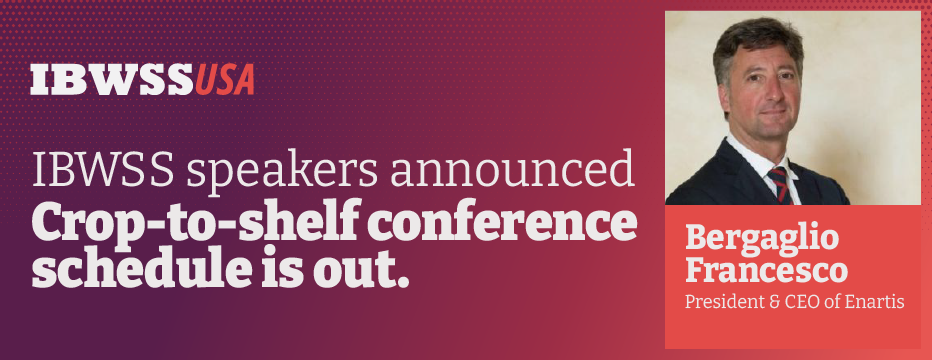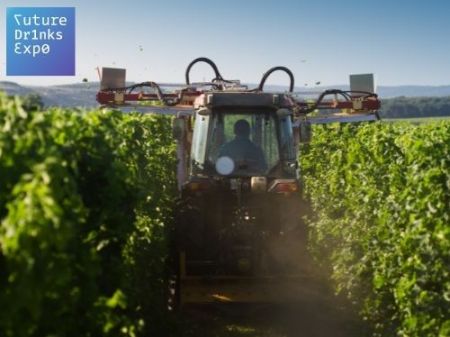Sommeliers Choice Awards 2023 Winners
ProWein 2015: Specialist Article No. 1 – October 2014 Natural, Organic, Biodynamic: Marketing or Magic?
The world’s leading international trade fair for wines and spirits – ProWein in Düsseldorf –returns organic wines to regional pavilions in 2015.

Following the wishes of most organic wine exhibitors, the world’s leading
international trade fair for wines and spirits – ProWein in Düsseldorf –
returns organic wines to regional pavilions in 2015. Is this the end of a
fad or the beginning of a new chapter as organic wines go mainstream?
Wine is, for better or worse, not immune to the affliction of trends.
Critter labels, “food wines,” and orange wines have all recently had their
moment in the sun. While there are some inevitable winners that emerged
from these trendy categories, talk of them has faded after a few years in
the spotlight. Today that spotlight is focused on the group of wines called
organic, natural, or biodynamic -- different monikers for categories that
are fundamentally linked. They’re linked mostly by what is not done to the
fruit and wines during production, but linked just the same. In many circles
these wines are spoken of as fad wines, and perhaps they are to a degree,
but can wines that have always existed, and will in all likelihood always
continue to exist truly be called “fads”?
The answer, of course, is both yes and no, and unfortunately it’s all quite
complicated.
Organic Wines as a Market Niche.
It is impossible to say that organic wines are better than conventionally
produced wines, though consumers, with their preferences, are free to make
such determinations. What can be said is that they are distinctly different
from conventionally produced wines. When wines made with organic grapes fail
to display these differences, they may lose favor with serious organic wine
drinkers, though at the same time the powerful marketing message that
organic carries with it more than makes up for that financial loss with more
mainstream consumers. The difference here is subtle, but it may be the
difference between being a fad or an enduring element of the wine industry.
Today organic wines are seen as a potentially revolutionary development in
some regions. Consider Tim Marshall’s (Deputy Chair of the Organic
Federation of Australia) recent statement: “I believe the McLaren Vale area
in South Australia could become the world’s number one producer of organic
wine in the world and we could easily realize this potential within a matter
of years." Continued growth in the sector accounts for some of wine’s
biggest gains around the world, even as wine sales fall or remain stagnant
in many European countries. Annual increases in sales of organic wines of
20% (Canada), 18% (Sweden), 10% (Holland), 8%(Denmark), 7% (Italy,
Switzerland), 5% (Austria, France) and 4% (USA) are revolutionizing the
industry in these countries. Acreage being farmed organically around the
globe has almost quadrupled over the past decade and this explosive growth
continues unabated.
All of these figures bode well for producers of organic wines -- but will
the increased use of “organic” as a marketing point of differentiation steal
some of the thunder from smaller, more rigorous producer? Or will it serve
as a catalyst for further segmentation within the market for ‘organic’
wines?
So this is where we are today. We have wines that are ironically known as
conventional wines having dominated the industry for the past half a century
or so. Prior to that, so called conventional wines were what we might refer
to as wines produced from organic grapes, and then prior to that, of course,
natural wines was the convention. Perhaps in fifty years time biodynamic
will be the convention of the day!
What Does the Future Hold?
To better understand the direction these wines will take, and what role
marketing will play in the broader adoption of the ‘organic’ monikers we
need only look around and see what is happening with them right now. One of
the truly profound developments with these wines today is their broad based
and mass acceptance. For proof of this we need only look at any typical
retail shop. Not long ago this group of “organic” wines was segregated on
retail shelves, either to allow for ease of shopping from devotees, or to
help the average consumer avoid them. They were the proverbial minefield --
full of pleasure, but also risks.
Today these wines are no long shunted aside, relegated to their own
‘special’ section. Instead they are returning to the shelves, displayed
alongside other examples of Cabernet, Barolo, Chinon, or Pinot Noir. They’re
no longer second-class citizens but fully the equal of the greatest
conventional wines of their appellation or variety on offer.
Adam Morgenstern, co-founder of the Organic Wine Journal sees this happening
as well, and reflects on the desires and intentions of the winemakers behind
the labels:
“The winemakers don\'t have it easy either. I haven\'t met one winemaker who
wants to be known for being organic. They want to be known for making great
wine — and organic is simply the way they think leads to the best quality.
Each one has their own balancing act, deciding whether they want to draw
attention to their practices over their quality, and even if they want to
put it on their label — which the majority do not. There\'s much more to
this, but the biggest fear I\'ve seen is that wine stores will take them out
of their appropriate geographical section and place them in the \'organic
ghetto\' maybe somewhere behind the counter next to the kosher wines.”
This is not an isolated incident. It is a movement and we need look no
further than ProWein for further evidence of this integration of “organic”
wines into the mainstream. ProWein in 2015 will no longer feature a
distinct “organic” pavilion which was originally necessitated both by the
increase in the number of self-identified organic producers participating in
ProWein from a mere 17 producers in 2005 to roughly 300 in 2014, and by a
professional interest to bring attention to the growth of this segment. This
return of organic wines to their national pavilions at ProWein 2015 is just
further proof both of the growth of these wines in numbers, as well as in
importance.
A final point of evidence as to the direction these wines are taking is the
gradual abandonment of certification. As more and more producers begin to
create wines that are in some way organic, more and more are eschewing the
expensive, cumbersome, and perhaps increasingly meaningless official
“organic” certifications. In much the same way that organics will no longer
be officially distinct at ProWein, producers no longer worry about being
officially marked as organic.
Sommelier and director of the podcast series I’ll Drink to That, Levi Dalton
succinctly captures the moment we are at today with his offhand observation
of wine in the mainstream: inexpensive and at the supermarket.
“A few days ago I was in a Whole Foods in California and I saw this loudly
organic labeled wine on a shelf, on sale for $10 a bottle. I checked the
winery website, which declares Frey "America\'s First Organic Winery" and
lists 17 wines for sale with "Organic" as the first word of the wine
listing, in addition to some Biodynamic offerings. It seems this winery has
securely latched onto "organic" as the brand idea, and it does seem to be
making the most of its use as brand positioning.
For me it is clear at this point that there are at least two meanings for
organic: there is organic as a farming protocol, and there is organic as
marketing. Some wineries engage in both, and some wineries pursue one and
not the other.”
Get to Know Organic Wines This Year.
We are undoubtedly at an inflection point in the trajectory of the modern
organic wine movement. Wineries engaged in organic as a farming protocol
are increasingly finding that intelligent use of back labels to inform
consumers, along with a more engaged and enlightened media and the wines
themselves, are all more valuable when demonstrating the quality achieved by
the organic methods than any stamp or symbol. Certifications, while not
meaningless, are rather easily attained by those with money and staff.
Power is moving from the bureaucracy to the consumer and producers. It’s a
slow process, but one that is obviously well underway.
While we are all better off as the wine industry increasingly adopts the
methods of organic production, let us not forget that there have been those
who not only have always utilized them, but did so in relative obscurity and
never once thought to leverage their practices as a marketing advantage.
Once again it is convenient to return to ProWein’s decision to return their
organic participants to their regional pavilions, for among the wines that
always remained under their nation’s flags were some that could have easily
declared themselves organic, or natural, and could have enjoyed a greater
share of the that spotlight. For whatever reason, philosophical, financial,
or simply out of complacency, they chose instead to remain with their
neighbors, simply producing whatever wine it was that they produced and
content to let that wine stand on its own.
Without a doubt the family of wines that are produced under the ‘organic’
umbrella represent some of the most interesting, dynamic, fun, and
innovative wines in the market today. They should be compared, as they
increasingly are today, not to one another, but rather to their regional
peers. If you wipe prejudices from your mind and approach these wines with a
clean slate I am sure that you will find that when compared with their peers
organic wines are their full equal. This can only be done tasting them side
by side with like wines and there is now no better place to do that than at
ProWein in 2015. Filling nine exhibition halls, ProWein is set to present an
unparalleled diversity of wines and spirits from all continents. Over 5,000
exhibitors from around 50 countries are being expected.
Always with their fingers on the pulse of the wine industry, ProWein has
once again proven to be ahead of the curve in delivering the quintessential
experience for the wine professional!
So see you there in Düsseldorf, Germany, for ProWein 2015 from March 15-17,
2015!
For ProWein photos, please visit www.prowein.com, “Press Service”.







